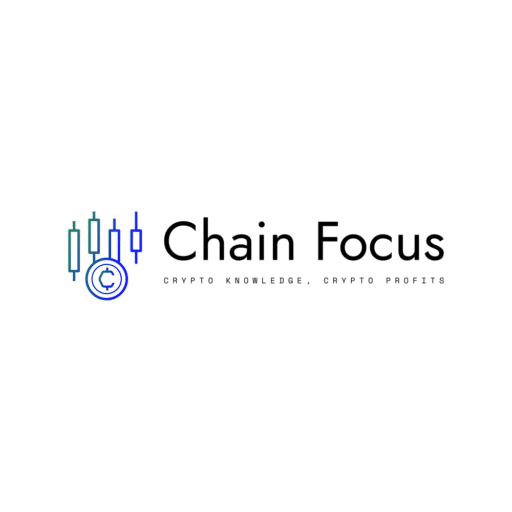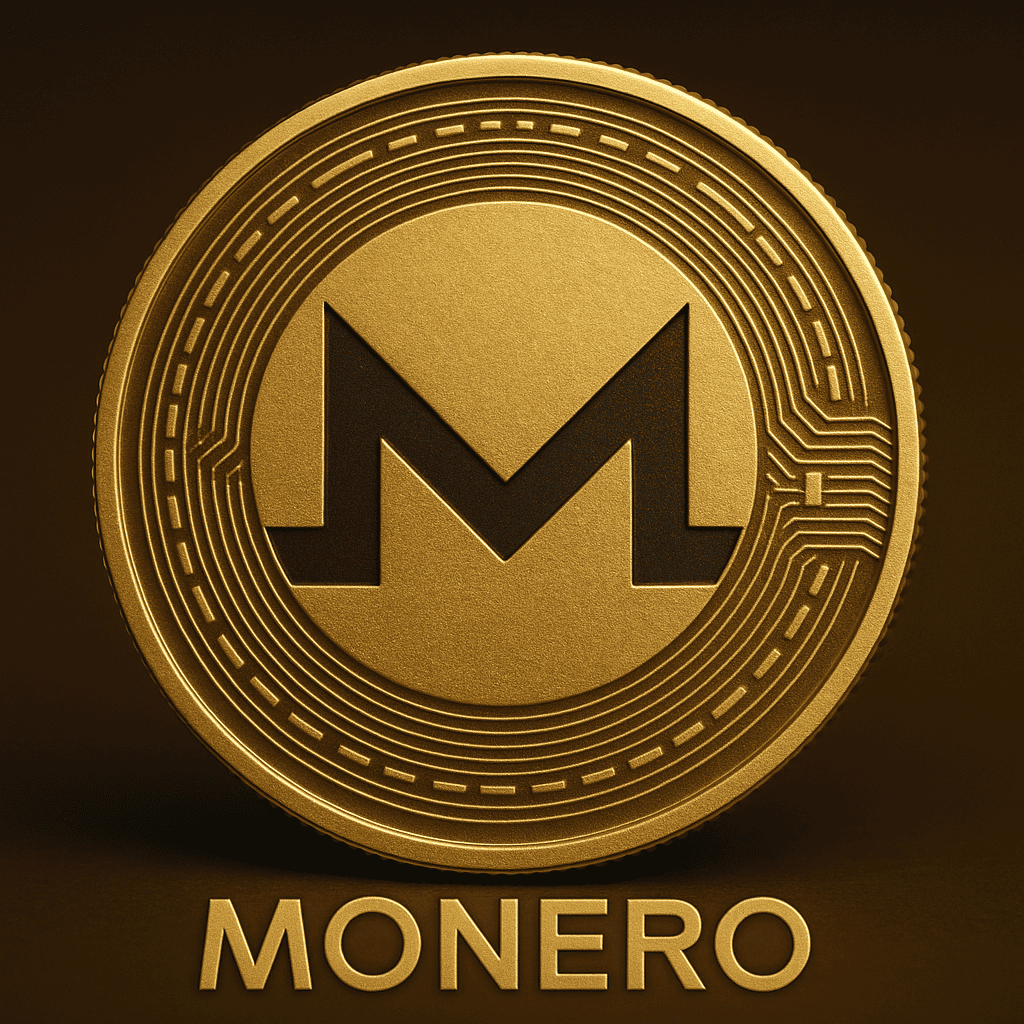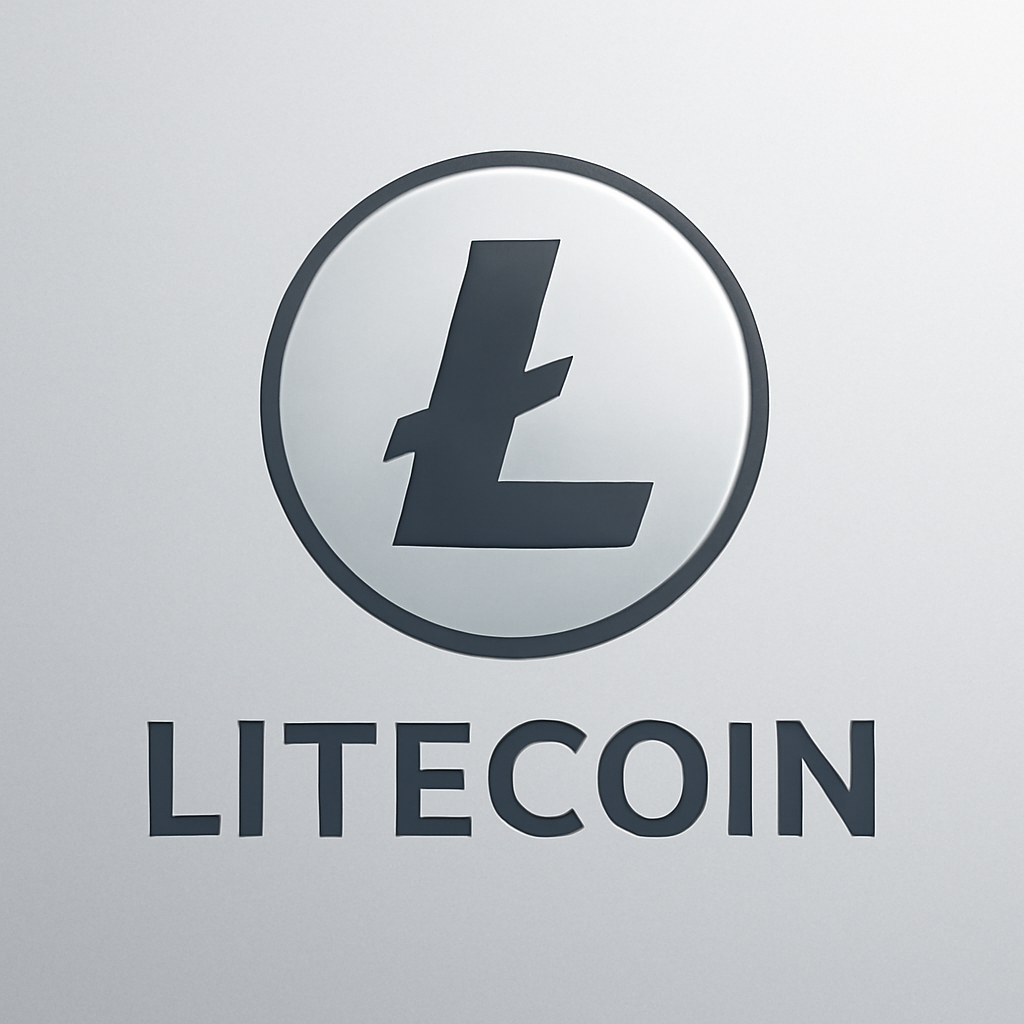Monero (ticker XMR) is a fully private, peer‑to‑peer digital currency launched on 18 April 2014. You hold and spend it just like any other cryptocurrency, but every transaction is cloaked by default so no outsider can see who paid whom or how much. The project began as a community‑driven fork of the Bytecoin codebase (itself the first implementation of the CryptoNote protocol). Early contributors such as thankful_for_today, smooth, and tacotime shaped the open‑source code and handed control to a volunteer core team; since then thousands of independent miners, node operators, and developers have kept the network running without a central owner.
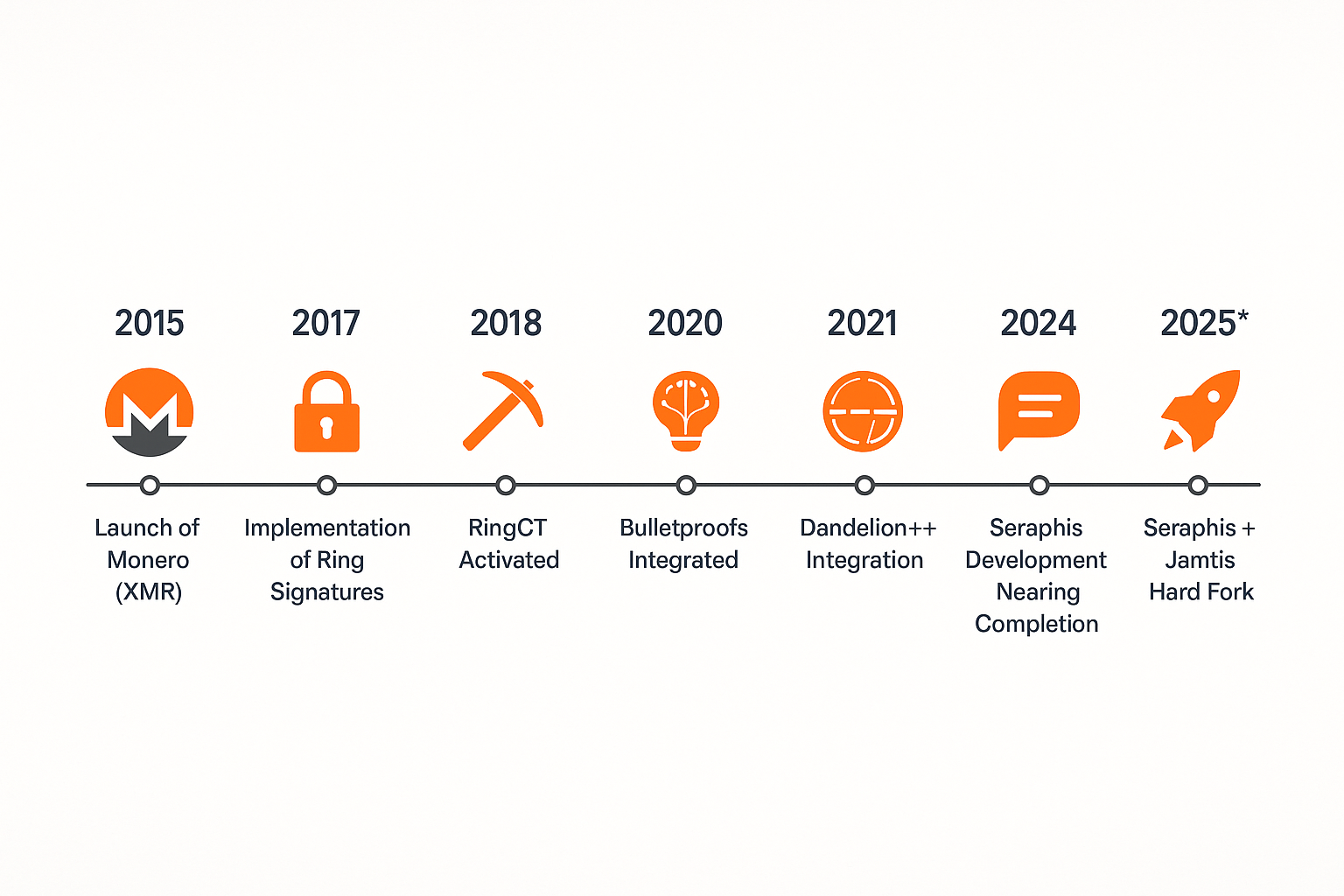
How the Technology Works
Monero runs on a permissionless blockchain similar in spirit to Bitcoin, but with extra layers of privacy:
- Ring Signatures + RingCT – bundle your signature with a decoy set so observers can’t tell which key spent the coins, while RingCT hides the amount.
- Stealth Addresses – every payment generates a one‑time destination, breaking the link between your published wallet address and the funds you receive.
- Bulletproofs → Bulletproofs+ – zero‑knowledge proofs that shrink transaction data and fees.
- Dandelion++ – routes the first broadcast through random relays to veil your IP address.
- RandomX Proof‑of‑Work – favors general‑purpose CPUs and resists ASIC monopolies, keeping the mining set‑up more decentralized.
A decentralized network simply means no single computer (or person) writes the ledger. Instead, thousands of nodes use RandomX to race for the next block every two minutes. When a valid block is found, the rest of the network verifies it and extends the chain. Consensus emerges naturally: the longest valid chain wins.
Performance, Fees, and Scaling
| Metric (mid‑2025 average) | Monero | Bitcoin |
| Block interval | 2 min | 10 min |
| Typical confirmations for retail spend | 1–2 blocks (≈2–4 min) | 1 block (≈10 min) |
| Base layer TPS | ~4–7 | ~4–7 |
| Median on‑chain fee | < $0.02 | $1–3 |
- You can bump speed by accepting zero‑confirmation or using payment channels such as the Lightning‑style layer “Silent Payments/Side‑chains” still in research.
- Monero’s dynamic block size lets the chain expand when demand spikes (with fees rising to deter spam), so congested fee events are rarer than on Bitcoin.
Scalability Headaches
Bandwidth and signature verification load grow with every privacy enhancement. The community tackles this through:
- Bulletproofs+ (2024) – 6× faster verification, 5–7 % smaller transactions.
- Seraphis + Jamtis (expected late 2025) – a complete address and wallet overhaul that chops chain bloat, halves sync time, and adds view‑tagging for faster scanning.
- Off‑chain swaps and side‑chains – projects like COMIT atomic swaps already link XMR to BTC without custodians; payment‑channel prototypes aim to move small, rapid transactions off the main chain.
Environmental Impact
RandomX deliberately leans on CPU power, so you can mine at home on spare desktops. That avoids giant ASIC farms, but it still burns energy:
- Annual consumption is roughly comparable to a small city, not a mid‑sized nation like Bitcoin.
- Because commodity hardware works, renewable‑powered hobby rigs (solar, hydro micro‑stations) are viable, and data shows a growing share of green miners.
- Critics note that any proof‑of‑work currency scales linearly with hash rate: if Monero’s market cap matched Bitcoin’s, total energy use would surge unless fees jumped or demand shifted to greener chains.
Ecosystem Developments
- Technology – Seraphis/Jamtis hard‑fork code freeze is targeted for Q4 2025. View tags, decoy selection tweaks, and full wallet rewrite are already on testnet.
- Partnerships & projects – e‑commerce gateways (NOWPayments, CoinPayments) add XMR; Haveno, a Tor‑based fork of Bisq, offers privacy‑by‑default exchange.
- Regulation – EU’s MiCA exempts “privacy coin” trading only on registered platforms with traceability tools (which Monero lacks), prompting delistings in several member states. In contrast, jurisdictions such as Dubai’s DMCC license OTC desks to settle XMR for institutions.
- Community funding – the crowdfunding system (CCS) financed audits for Seraphis and a second RandomX review, showing grassroots sustainability.
Price Outlook to 31 Dec 2025
Nobody knows the future, but synthesising technical analysis with adoption trends gives a plausible range:
- Base case – sideways between $250–$400, reflecting stable hash rate and slow but steady merchant uptake.
- Upside scenario – successful Seraphis launch, macro flight from fiat, and fresh exchange listings could lift quotes to $500+.
- Downside risks – deeper exchange bans or a critical cryptography bug might drag XMR back toward the 2024 low near $120.
Drivers you should watch: privacy regulation, spot‑ETF rejections or approvals, and CPU price shocks that alter mining economics.
Why You Might Prefer Monero
- Complete default privacy = strong fungibility (every coin is equal).
- Adaptive block size avoids bidding wars for block space.
- ASIC‑resistant mining lets anyone solo‑mine for a fair shot at rewards.
- A mature eight‑year track record with zero catastrophic chain‑splits.
- Frequently called “digital cash” because, like physical notes, nobody can audit your wallet.
Where Monero Falls Short
- Liquidity is thinner; many big exchanges avoid listing it.
- Higher on‑chain data footprint per transaction slows initial sync.
- Compliance fears keep institutional funds away, limiting mainstream exposure.
- Merchant support is improving but still lags Bitcoin and stablecoins.
Privacy: How Anonymous Is It Really?
Your address never appears on‑chain; observers only see encrypted outputs and decoys. Still, privacy isn’t bullet‑proof:
- IP leaks without Tor/i2p, timing leaks if you reuse sub‑addresses, and statistical analysis against weak decoy sets can reduce anonymity.
- Compared with transparent chains (Bitcoin, Litecoin), you enjoy far stronger default privacy; compared with zero‑knowledge systems like Zcash’s Orchard, you trade slightly weaker theoretical privacy for better adoption and auditability.
Security Fundamentals
- Proof‑of‑work + over 2 GW of distributed CPU hash rate deters 51 % attacks by driving up rental costs.
- Cryptographic primitives (Ed25519, Curve25519, Bulletproofs) are widely reviewed.
- Wallet compromises, not blockchain hacks, remain the real risk, so you should use hardware or air‑gapped devices.
Decentralization in Practice
No foundation owns trademarks, no VC pre‑mine funds development, and RandomX discourages ASIC oligopolies. Governance is rough consensus in public chat rooms; code changes only after weeks of review and multiple testnets.
Is Monero “Real Money”?
Money usually means a store of value, medium of exchange, and unit of account. Monero nails the first two in niche circles:
- Venezuelan freelancers already quote rates in XMR to dodge hyper‑inflation.
- Street markets in Lagos or Istanbul accept it through mobile wallets.
- Yet prices in everyday shops are still posted in fiat, so XMR isn’t a widespread unit of account.
Helping People under Financial Pressure
- Cuba & Afghanistan – international sanctions freeze bank rails; sending XMR over Tor bypasses blockades so families receive remittances in minutes.
- Zimbabwe & Lebanon – collapsing local currencies push you to hedge in hard‑capped assets like Monero without needing foreign‑currency bank accounts.
- Global unbanked – anyone with a smartphone sideloads a wallet APK and instantly joins the payment network; no KYC, no discrimination.
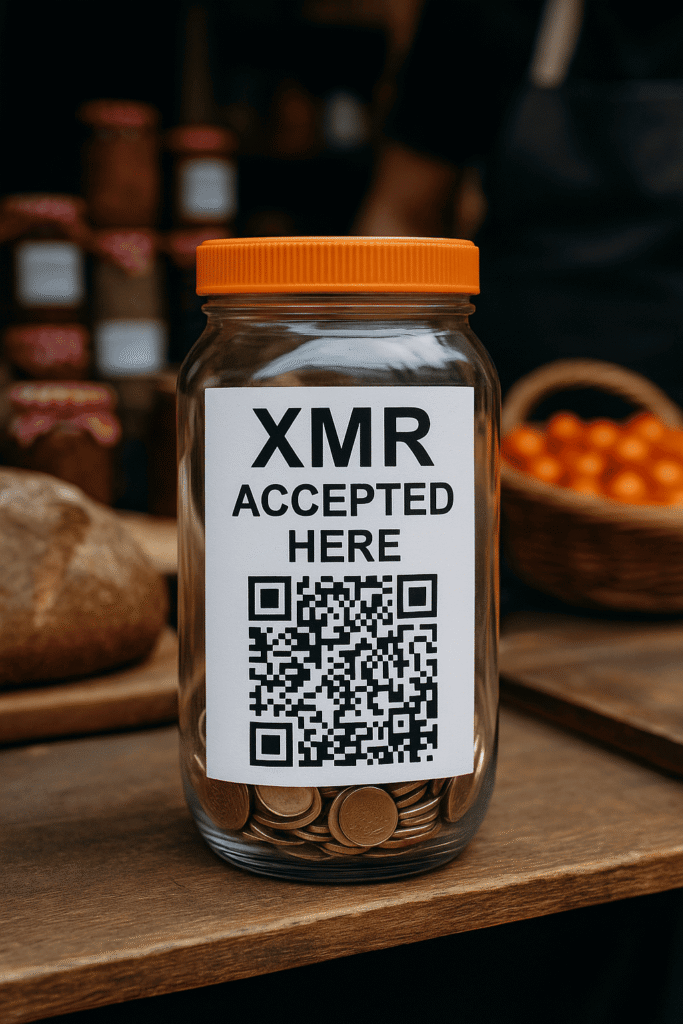
How Governments React
- El Salvador – legal tender status applies only to BTC, but private merchants are free to accept XMR; a few cafés do so quietly.
- Japan, South Korea, UK – exchanges must delist privacy coins or provide tracing; most choose delisting.
- United States – XMR trading remains legal, but FinCEN guidance flags extra reporting duties; IRS offers bounty programs for chain‑analysis breakthroughs.
- China – domestic exchanges banned since 2021; OTC desks operate via peer‑to‑peer chat apps.
Main Use Cases
- Person‑to‑person payments where you don’t want a public record.
- Tips and donations (journalists, open‑source projects) without donor exposure.
- E‑commerce for privacy‑sensitive goods or where charge‑backs are impossible.
- Long‑term store of value for users who distrust fiat or need portable wealth.
- Cross‑chain atomic swaps to move value between Monero and other assets without centralized exchanges.
Could Monero Replace Gold?
Both are scarce, borderless, and censorship‑resistant. Gold wins on millennia‑long history and physical tangibility; Monero beats it on portability and divisibility. Realistically, Monero complements rather than replaces gold, offering digital cash‑like privacy rather than a macro hedge held by central banks.
Regulation Snapshot
| Region | Policy stance | Exchange availability |
| EU | MiCA requires traceability → most major exchanges dropped XMR spot pairs in 2024 | Low |
| US | Allowed with enhanced AML; futures not approved | Moderate (Kraken, Coinbase Pro delisted) |
| Middle East | UAE free‑zone licences OTC XMR | Moderate |
| Asia‑Pac | Japan/Korea privacy‑coin ban; Singapore neutral | Low |
| LatAm | Generally permissive; local P2P thriving | High |
Defences against Hackers
- Over 7 000 independent full nodes relay blocks, so taking down connectivity needs nation‑state‑level effort.
- Chain re‑org deeper than 60 blocks never observed; the cost to rent equal hash power for two hours exceeds several hundred million dollars.
- Decentralised DNS seeds and I2P/Tor peers keep the network reachable even when ISPs censor clearnet ports.
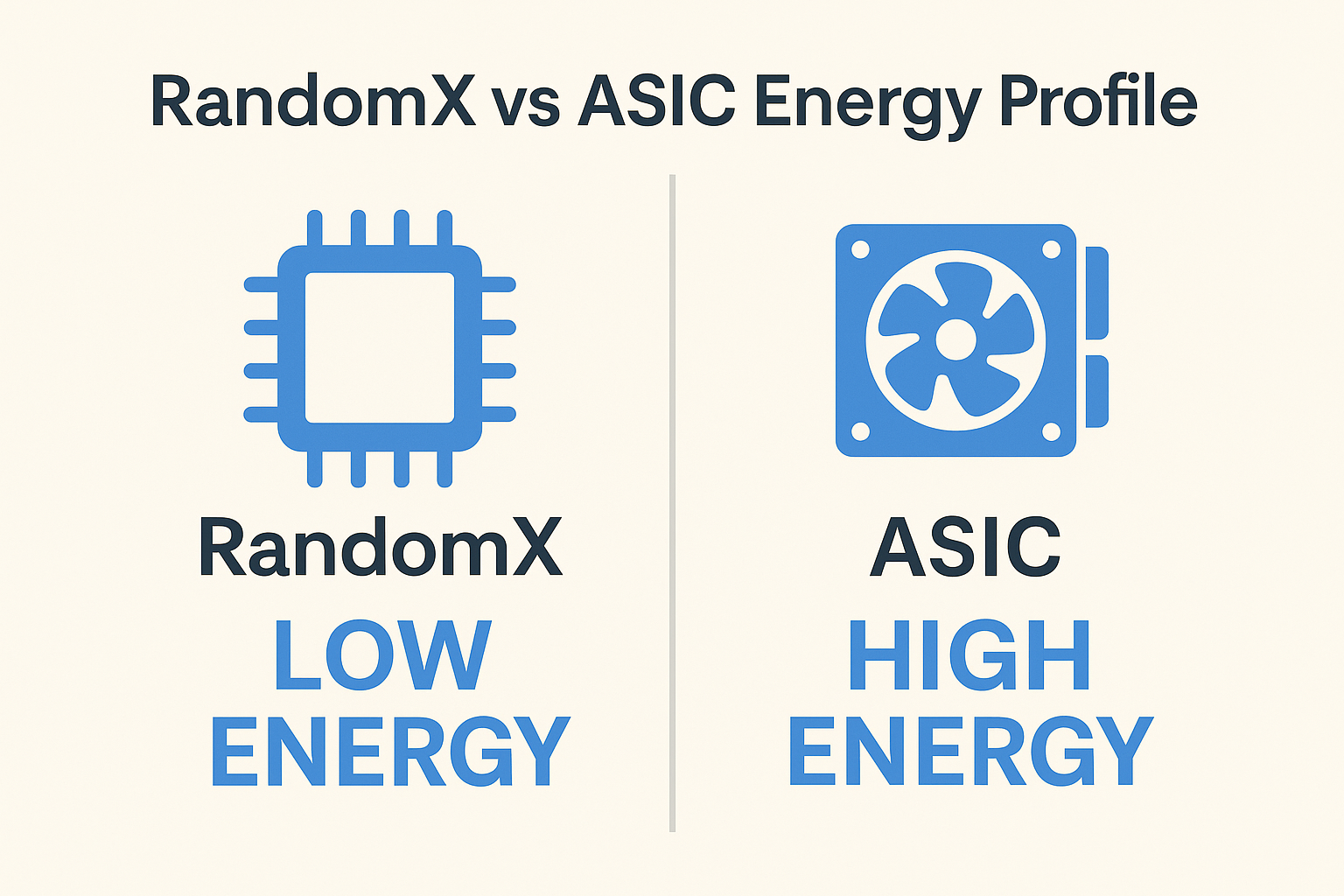
With these fundamentals in mind, you can decide whether Monero fits your need for private, censorship‑resistant digital money.
Disclaimer
The information on this website is for educational purposes only, and investing carries risks. Always do your research before investing, and be prepared for potential losses.
18+ and Gambling: Online gambling rules vary by country; please follow them. This website provides entertainment content, and using it means you accept out terms. We may include partnership links, but they don't affect our ratings or recommendations.
Crypto promotions on this site do not comply with the UK Financial Promotions Regime and are not intended for UK consumers.
